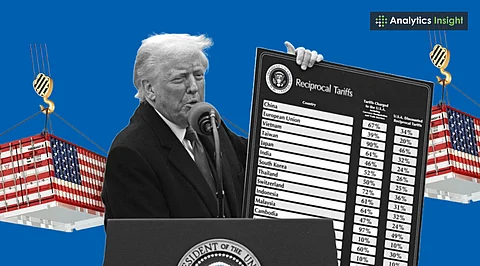In a significant policy shift poised to redefine US-India trade relations, President Donald Trump has announced a sweeping 25% tariff on all Indian exports, set to take effect on August 1, 2025. This assertive measure, unveiled via his social media platform, has sent immediate ripples through international markets and diplomatic circles, impacting an estimated $87 billion in annual Indian goods destined for American consumers and businesses.
The rationale behind the Donald Trump tariffs stems from claims of a substantial US-India trade deficit and criticisms regarding India’s high import duties on American products. Furthermore, a forthcoming penalty has been signaled, directly linked to India’s ongoing trade relationship with a specific foreign power, particularly concerning its energy and defense procurement, adding another layer of complexity to the bilateral dynamic.
This sudden imposition of a 25% US import tax on India poses a considerable threat to supply chains and consumer costs within the United States. American enterprises heavily reliant on Indian manufacturing for components or finished goods are now bracing for increased operational expenses, which could translate into higher prices for end-users and potential shifts in sourcing strategies.
The Indian export impact is anticipated to be profound, particularly across key sectors that form the backbone of India’s economy. Electronics manufacturers, a burgeoning industry with growing global supply contributions, face significant disruption. Similarly, India’s robust pharmaceutical sector, a critical supplier of generic drugs to the U.S., risks losing its competitive edge due to the additional levy.
Labor-intensive industries, such as textiles, garments, and the vibrant gem and jewelry export market, which employ millions, are also expected to struggle in maintaining their market share against rival nations. This comprehensive tariff package represents a broader restructuring of global trade policy, encompassing new duties on raw materials like copper and adjustments to existing international trade agreements.
The announcement arrives at a sensitive juncture, as both nations were reportedly advancing towards a more extensive bilateral trade agreement. India’s Ministry of Commerce has responded cautiously, indicating a thorough review of the implications while reaffirming its commitment to negotiating a “fair and balanced” trade resolution, highlighting the intricate dance of economic diplomacy now underway.
Beyond the direct US-India dynamic, these protectionist measures initiated by President Trump have ignited wider concerns among global allies. European leaders, notably French President Emmanuel Macron, have openly advocated for enhanced regional economic independence and competitiveness in direct response to Washington’s increasingly tariff-driven approach, signaling a potential shift in international trade paradigms.
As the world closely monitors this evolving landscape, India confronts a complex economic and diplomatic challenge. The implementation of these substantial tariffs threatens to unravel decades of collaborative economic progress, forcing industries and governments worldwide to re-evaluate their positions within a rapidly changing framework of international commerce and trade relations.






Leave a Reply